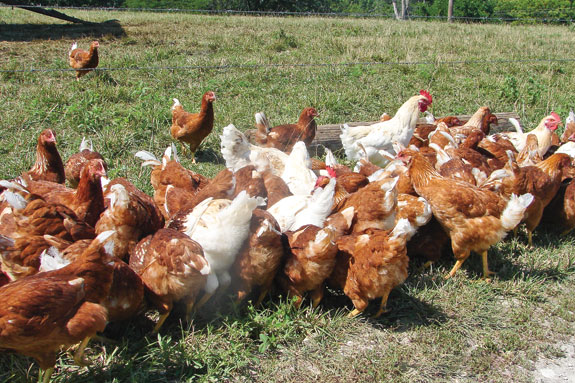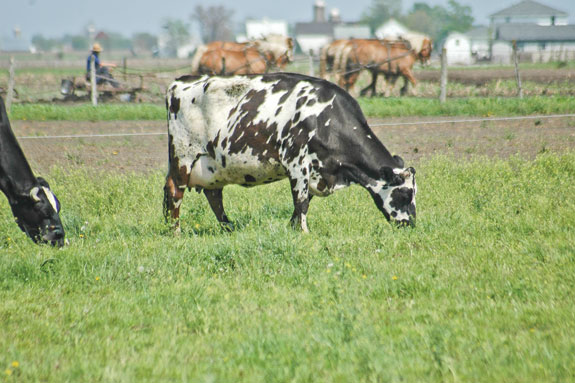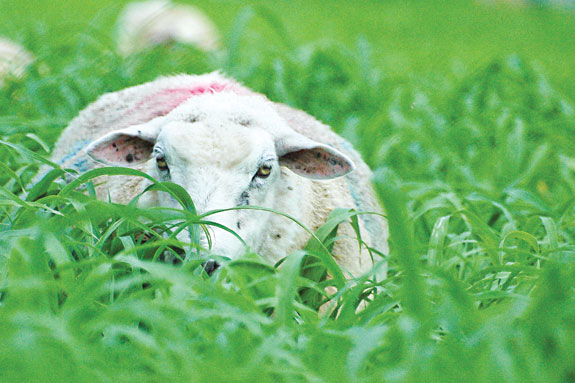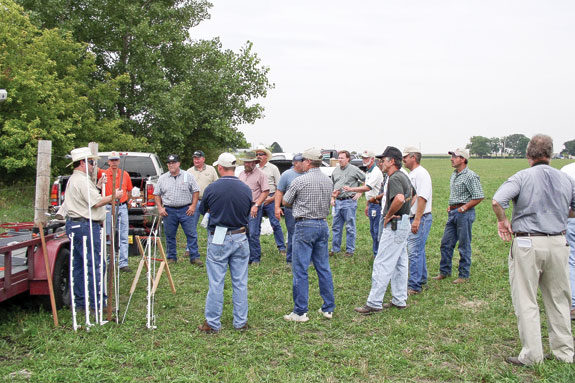Pasture walks give the farm operator and agency personnel an occasion to communicate ideas or thoughts on a variety of forage and pasture management topics.
These “show and tell” opportunities allow shared expertise that can speed up the learning curve for successful planning, planting and implementation of grazing management systems.
Experiences and ideas that have worked, as well as those that have failed, provide great insight and knowledge to attendees.
Participants (neophytes or veterans) can ask questions at their own level that they can relate to a particular farm operation. Innovations or novel ideas of graziers are often spread through these casual exchanges.
Basic system development might be a topic for farm location that has constructed infrastructure like perimeter fencing, paddock fencing or water systems necessary for animal control, movement and management.

Finding a producer who has just completed an Environmental Quality Incentive Program (EQIP) project through NRCS might be the place to start.
These operators have a good handle on current costs and can answer questions related to program participation.
Permanent perimeter and semi-permanent or portable paddock fencing always stimulates interesting conversations.
Many material options are available for fences. Different wire types, posts, electrified versus non-electric, gadgets and gizmos are offered for purchase. This is an opportunity to discuss the costs, durability and use of various products.
After fencing for animal control, water systems may be the key factor to consider for making a managed grazing system work.
Research has shown that water availability within 800 feet of grazing improves forage harvest efficiency and uniformity, reduces animal movement as a group, and spreads manure nutrients more evenly throughout the pasture. Various water sources can be part of a total system.
Pasture walks highlighting the use and development of available water resources can be a useful aid to producers. Stream crossings, pond water and spring developments can show restricted animal access points to supply clean water and reduce pollution.

Some producers are fortunate to have ponds or springs that can be developed and gravity-fed to several paddocks or locations throughout a grazing system.
This can be an energy-saving source of water that does not use additional electric energy for pumping.
Wells or other water systems may use pumps to supply water. Nose pumps, ram pumps, submersible pumps and others bring many questions to the event.
Daily per-animal or herd water needs stimulate questions on tank size, floats and pipe diameter, to name a few.
Forage species may be the focus of another pasture walk – how grass and legume species relate to a managed grazing program.
Producers and experts can discuss the pros and cons related to various kinds of livestock. This is a good opportunity to discuss forage species characteristics related to establishment, persistence, nutritional quality, animal treading, productivity, palatability and fertility.
Beef cattle, dairy cattle, sheep, goats, horses or even poultry can be emphasized in a pasture grazing program.
This can show how producers can meet the nutritional needs of animals in different stages of growth or production. Multiple-species grazing can highlight the use of browsing versus grazing and improved utilization of available forages.
Seasonal pasture walks allow targeted BMPs or crops to extend the grazing season at different times of the year.

Spring pasture walks can demonstrate new plantings, how and when to start grazing in the spring, or target spring brassicas or other crops.
Summer pasture walks may focus on annual crops like sudangrasses, millets, clover, or grazing standing corn.
Fall pasture walks can show grazing crop residues, dormant hay crop grazing or grazing fall turnips and oats.
Winter pasture walks can show managing and using stockpiled forage like tall fescue, crop residues or standing corn. Winter feeding stations or watering systems can be exhibited.
Plan to coordinate or host pasture walks in your local area. Put together a committee to discuss and plan the various options you might have.
Include graziers, agency personnel, industry representatives and media sources. You may be surprised at the impact you can have on promoting sustainable grazing management, and you might be amazed at the lifelong friends you meet walking through a pasture! FG
PHOTOS:
Beef cattle, dairy cattle, sheep, goats, horses or even poultry can be emphasized in a pasture grazing program. This can show how producers can meet the nutritional needs of animals in different stages of growth or production. Photos courtesy of A.R. Cobb, retired University of Illinois Extension Sheep Specialist
and Mike Roegge, Illinois Extension Educator.

Dean Oswald
Extension Educator - Animal Systems
University of Illinois
oswaldd@illinois.edu









